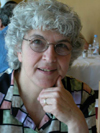The conference program
was organized according to the following general scheme:
Friday: Political action
inside Israel
Saturday: Deliberations about the conflict in the
Middle East
Sunday: Deliberations about conflicts
globally
Monday: Political action inside Palestine
Tuesday: Political action at a checkpoint
Summary deliberations
1. Deliberations
Conference deliberations
were divided into two themes:
v The Israeli-Palestinian Conflict
Panels
on “Feminist Perspectives on the Palestinian-Israeli Conflict”
19
workshops, each related to the Middle East conflict. Some examples:
·
Militarism, occupation and resistance
·
Is the two-state solution still viable?
·
Occupation, women and violence
v
Conflicts around the Globe
Panels on “Women's Global Challenges” and “Linking local with international issues”
19 workshops on international activism and insights. Some
examples:
·
Effects of globalization and privatization on women
·
Resistance: Women's experiences and perspectives
·
The poetry and literature of resistance
Each panel was composed
of women from various countries, reflecting the diversity of the conference participants.
An effort was made to
have each workshop moderated by one Israeli and one Palestinian woman, though in practice this did not always happen.
Political films brought
by participants were screened on one conference day in a meeting room.
Open mike:
Each day during the workshops,
an open microphone session was conducted in the plenary area, where any woman could take the microphone and speak to the issues.
2.
Political Action
Holding a conference in
Palestine is itself a significant political act. Holding it in occupied territory
under the title “Women Resist Occupation and War” takes it a step further.
In addition, three formal political actions were organized by the conference:
♦ Women in Black vigil: On Friday afternoon,
conference women marched across town dressed in black to attend the Jerusalem vigil of Women in Black (photo), carrying banners
in many languages that said “End the Occupation”. Between 500 and
1,000 vigilers, this was a show of strength inside the heart of Jewish Jerusalem.
♦ Action at the Separation Wall: On Monday morning,
approximately 400 international women entered Ramallah to express solidarity with the Palestinian women. That afternoon, the entire group, joined by some 100 Palestinian women activists, held a demonstration
in Bil’in, where opposition has been fierce to construction of the Separation Wall.
There were some verbal exchanges with the soldiers (photo) and, as the women left, tear gas was fired at the Palestinian
youths who had joined them. Following the visit to Bil’in, conference participants
collected $700 among themselves to buy supplies for the 480 school-children in Bil’in.
♦ Action at a Checkpoint: On Tuesday morning,
about 500 women formed a human chain across the Kalandia checkpoint, which separates Jerusalem from Ramallah. Some international women joined the Palestinian women on the Ramallah side of the checkpoint, and others
joined the Israeli women on the Jerusalem side. For an hour, the women sang songs
of peace, and held signs calling for a just peace and an end to the occupation (photo).
One Palestinian woman was arrested, but released after negotiations and the threat that the women would not leave until
her release.
3. Cultural events
Every evening, multi-cultural
events were held in the 3 hotels that had been “taken over” by the conference.
Each hotel held events of a different character, and participants walked among the hotels, in close proximity to each
other, choosing the events that they preferred – political film, music, dance, political satire, storytelling, etc.
Some examples:
·
“Arna’s Children” – a film about an Israeli woman who lived in
Jenin, followed by a discussion with the producer and director
·
“Raging Grannies” – subversive political music
·
Mice and Lea Goldberg’s horror show – political drag show

